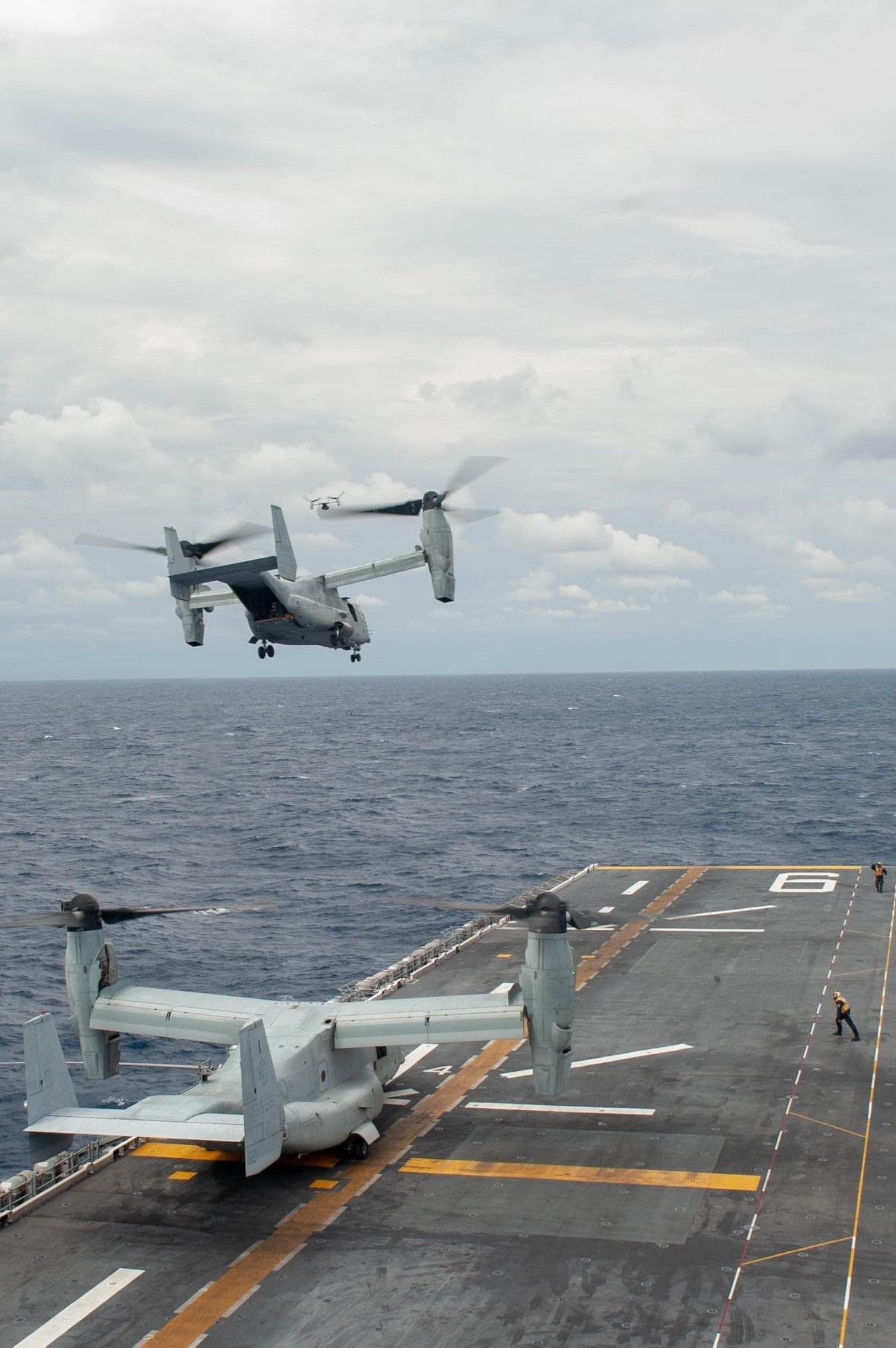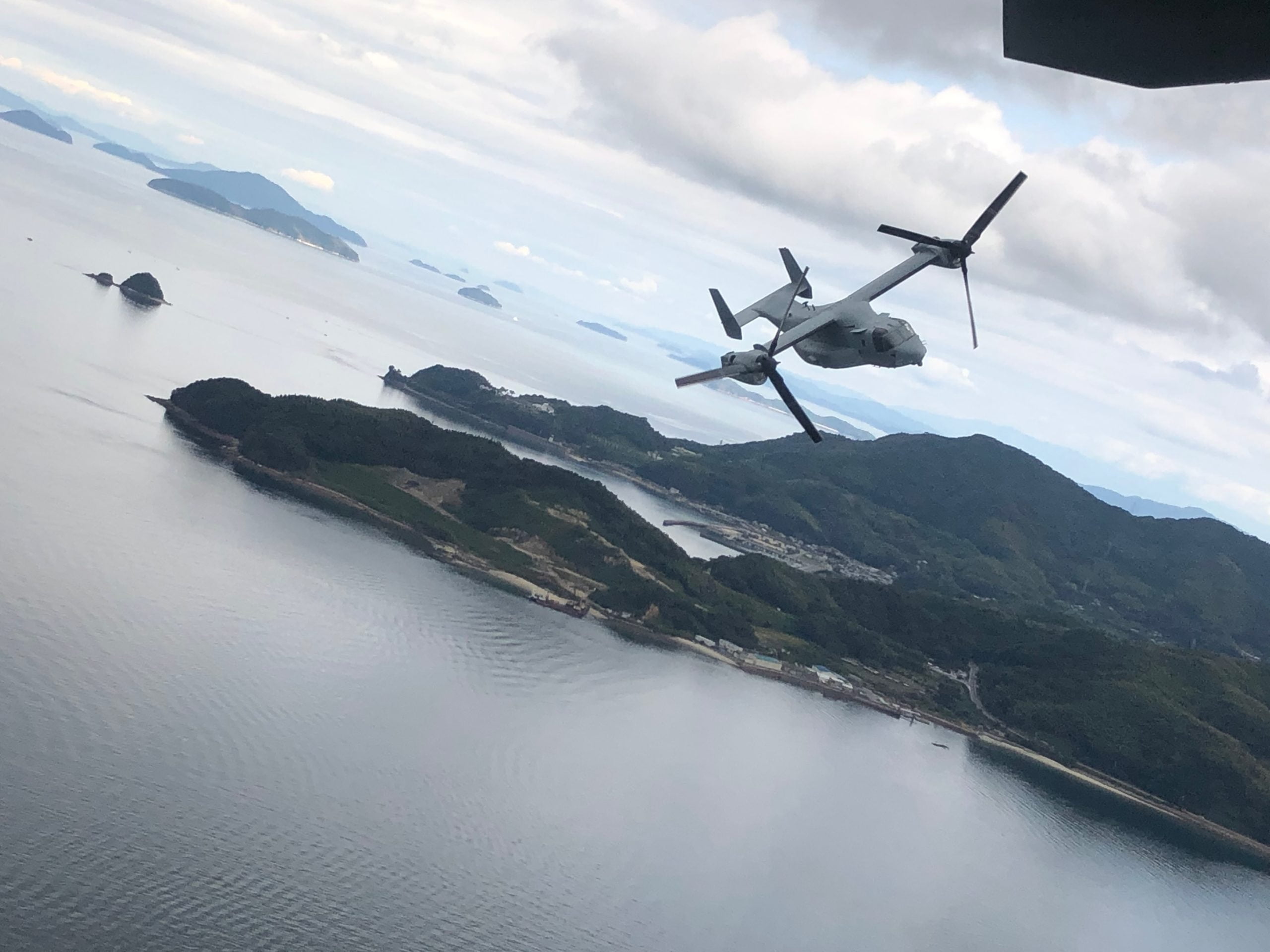By Robbin Laird
During my November 2023 visit to MAWTS-1, I had a chance to meet with Maj Nicholas Peters to discuss the activities of the assault mission training part of MAWTS-1. Maj Peters is the Assault Support Department Head.
While the traditional image of assault support remains a key one – transporting Marines to a place of embarkation and ready to fight – there is growing emphasis on longer range missions and on broadening the mission set.
The Osprey and KC-130 in SP-MAGTF operated at distance. This experience is being folded into training for long range missions in the Pacific. The other members of the assault force – the rotorcraft including heavy lift – are not built for the range and speed of a combined KC-130J-Osprey mission set.
But working the broader assault package in areas of interest remains a key bread and butter capability of the USMC, and continued press of events such as the Middle East certainly reminds one of the necessities of ensuring that the Marines are range for a spectrum of operations, not just somebody’s pet rock.
Earlier this year, I interviewed Col Marvel who identified a range of adaptations which the Osprey is currently going through to support the joint force.
Col Marvel underscored that expanding the mission set for the Navy’s CMV-22B was certainly possible but was not in his domain of responsibility. But the USMC is clearly expanding the payloads carried by the MV-22B which supports distributed operations, and if the three services which operate the aircraft found ways to expand their ability to cross-service each other’s aircraft, they would be able to enhance such operations.
As Col Marvel put it: “The Osprey provides unique speed and range combinations with an aircraft which can land vertically. It is a very flexible aircraft which could be described as a mission-kitable aircraft. The Osprey has big hollow space in the rear of the aircraft that can hold a variety of mission kits dependent on the mission which you want the aircraft to support.”
He emphasized that with a variety of roll-on roll-off capabilities with different payloads.
“We can add the specialists in the use of a particular payload along with the payload itself to operate that payload, whether kinetic or non-kinetic, whether it is a passive or active sensor payload. We need to stop thinking about having to put the command of such payloads under the glass in the cockpit and control those payloads with a tablet.”
Maj Peters indicated that at MAWTS-1 they have expanded the mission sets for their Ospreys to embrace C2 and ASW efforts. With regard to the C2, roll on roll of capability can provide for a variety of joint force enablement and support missions. With regard to ASW, the Osprey can deploy sonobuoys in support of the Navy’s ASW mission as well, and they have exercised such capability at MAWTS-1.
A key aspect of the new emphasis for Osprey training being performed at MAWTS-1 is the TRAP mission for the Navy. Obviously, there have events in the past such as the pilot rescue in Libya which highlighted how the speed and range of the Osprey provides unique TRAP mission capabilities.
But now with the focus on Indo-PACOM and the concern for loss of aircraft in a contested operation, it is important for the U.S. Navy to rely on the speed and range of the Osprey to support the TRAP mission. Here the Osprey community is working hoisting methods to provide for the mission, and this has become part of the training conducted by the Assault Support Department.
The Osprey is flown by the USAF and Navy as well, which leads to a kind of built in joint integration in terms of a common operator pool across the services. Peters indicated that a USAF Osprey pilot was an instructor in his department and taught the students how the USAF using its Ospreys and operated them differently from the USMC.
And my visits to North Island with the CMV-22B squadrons certainly underscores that with the Navy operating their version of the Osprey, there are significant opportunities for working maritime integration at a very fundamental support and assault level as well.
The photos are from Maj Peters time at VMM-265.




